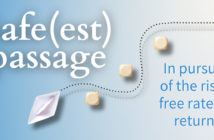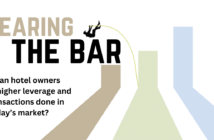by Rushi Shah
In 2018, the capital markets that control the flow of capital for commercial real estate transactions, including hospitality, were bombarded from all sides. In the mix were the mid-term elections, rising interest rates, and high volatility in the equity markets. Now, as we start 2019, these markets must deal with recessionary pressures. But a recession may not be eminent. Historically, when economists and market experts expect a recession the most, that is when it is least likely to actually happen. With the threat of a slowdown looming, everyone starts preparing. Borrowers make more prudent decisions, while lenders and investors increasingly scrutinize asset quality. This caution exercised by capital markets’ participants is one of the reasons for the extended economic recovery cycle. Understanding the pieces in play and how to successfully navigate this next cycle will be critical for successful hotel owners.
What We Saw in 2018
In 2018, the capital markets faced strong headwinds, mostly in the form of rising interest rates. Before 2018, the interest rates markets were not pricing in large increases in short-term rates. In 2018, the Fed raised short-term interest rates by 0.75 percent with a high likelihood of another 0.25-percent rate hike. This also led to long-term interest rates ticking up, albeit to a lesser degree. So, where did that leave us in terms of the business cycle? Right now, we are in an extension of the business cycle. This position is both good and bad.
On the positive side, hotels have seen growing RevPARs. In some markets, however, this growth is starting to slow. We’ve also seen increased occupancy in industrial, multi-family, and office assets. Retail occupancy, however, has not fared as favorably. Bankruptcy has already shattered Toys ‘R Us and Sears, and other brands are joining the list of failed firms. Conditions will be rougher for retail asset investors.
On the negative side, when the business cycle extends, credit decisions become more and more cautious across the spectrum. Rating agencies and hedge funds that normally take the highest risk in the capital stack are now questioning what will happen in the event of a recession. Will the asset perform? When credit decisions are made more conservatively, fewer bad loans are made with reduced risk of default.
Ironically, this investor abundance of caution positions us for a favorable 2019, as it has attracted more than $100 billion in new capital to the real estate capital debt markets. This capital is ready, willing, and able to fund good loans on all commercial real estate assets, including hospitality. Let’s take a look at what hotel owners can expect.
Availability of Bridge Debt
Investors are being fairly cautious as they underwrite hotel bridge debt in 2019. Hotels have historically been the red-headed stepchild in terms of risk-adjusted returns because the asset class is cyclical and its business model depends highly on fickle reservations full of operational risks.
As we start the New Year, bridge debt investors are hyper-focused on the hotel’s future ability to exit the short-term loan into permanent debt. Now more than ever, they want to make sure they will be repaid.
This is occurring because developers are constantly speculating unlimited RevPAR growth for a perpetual period of time. It is also exactly what sparked the last bubble. Hence, credit committees, chief investment officers of these funds, and rating agencies are challenging the projection assumptions of developers.
With this backdrop, there is plenty of bridge capital available for the right deal for the right sponsors in the right markets.
Supply and Demand
The lack of easily available construction capital, or at least tighter standards for new construction activity, is likely to be a self-correcting phenomenon for restricting new supply for hospitality assets. This could be a boon for current owners who want to protect their territories and a curse for new entrants and franchise owners.
Historically active sources of capital for new construction, such as government-guaranteed programs like SBA and USDA, also have started to scale back. At the same time, construction debt funds as well as large investment banks also are focusing more on a project’s feasibility.
All is not lost, however. There are select markets around the country that will continue to see healthy new construction activity where there is organic growth in demand.
Emerging Domestic Markets on Investors’ Radars
In an increasing interest-rate and compressing cap-rate environment, the net yield to equity investors continues to be squeezed. To keep up with the returns, developers and debt providers are exploring new secondary and tertiary markets where taxes are lower, labor is cheaper, land is plentiful, and reasonable resources are more available.
These previously under-the-radar, tier-two and -three cities such as Milwaukee, Atlanta, and Charlotte have seen a rise in economic activity and a new wave of local demand drivers from companies relocating to the areas.
Availability of Permanent, Fixed-Rate Debt
Fixed-rate debt also is dealing with strong headwinds in the form of interest rates. This has given pause to fixed-rate debt investors and will likely impact the total issuance of CMBS debt.
Fixed-rate permanent CMBS debt will continue to be available for the right deals, but fixed-rate bond investors are increasingly looking for bond products that are more short-term in nature. This ensures that when short-term rates rise, investor income is not reduced.
As a result, permanent CMBS lenders will be much more selective than in the past. For good-quality assets in good markets with diversified demand drivers, however, capital will continue to be plentiful. Debt and equity investors are warming to secondary and tertiary markets, but still need to feel comfortable that there are sustainable demand drivers before they provide non-recourse financing on assets in those locales.
This is an example of where an experienced financing intermediary or investment banker can create significant value. He or she can leverage long time relationships and pinpoint who is in the market. Timing is especially critical, as not all lenders will be in the market for hotel financings at all times.
Acquisition Financing
Acquisition activity is likely to continue to lag behind refinance activity. The reason is the gap between seller and buyer expectations. Sellers expect lower cap rates when they sell the assets. However, due to prudent leverage and higher all-in interest rates, buyers are having a difficult time making the math on the returns work. This is causing buyers who want to create liquidity to refinance the asset instead.
Because multi-family and self-storage asset classes are being priced higher and higher with cap rates moving lower and lower, prices have skyrocketed. As a byproduct, capital has been diverted to hospitality assets.
Hotels have emerged as the place where real estate investors can still make the returns compute. This new influx of hotel capital has pushed hotel asset values upward.
Many real estate investors from historically mainstream asset classes are starting to look at hospitality as the asset class that can still deliver double-digit returns for their equity investors.
Looking Ahead to 2019
We expect 2019 to be a volatile year for hospitality based on economic activity and credit availability.
Bottom line, hotel owners should take advantage of capital when it is available and use prudent leverage and recourse when possible. Knowing when to take recourse off the table and when to lock in a relatively low long-term interest rate on an asset can make the difference between winning and losing.
The capital markets will become pickier as the business cycle advances. Regardless of the temperature of the current environment, the ability to navigate changing economic conditions is crucial. Leveraging an experienced intermediary’s understanding of economic cycles and capital-source relationships can be a game-changer for reaching your short- and long-term financing goals, and positioning yourself for future success. Capital will be there. You just need to know where to find it.





1 Comment
This post is definitely satisfying. Keep posting quality articles for your followers!